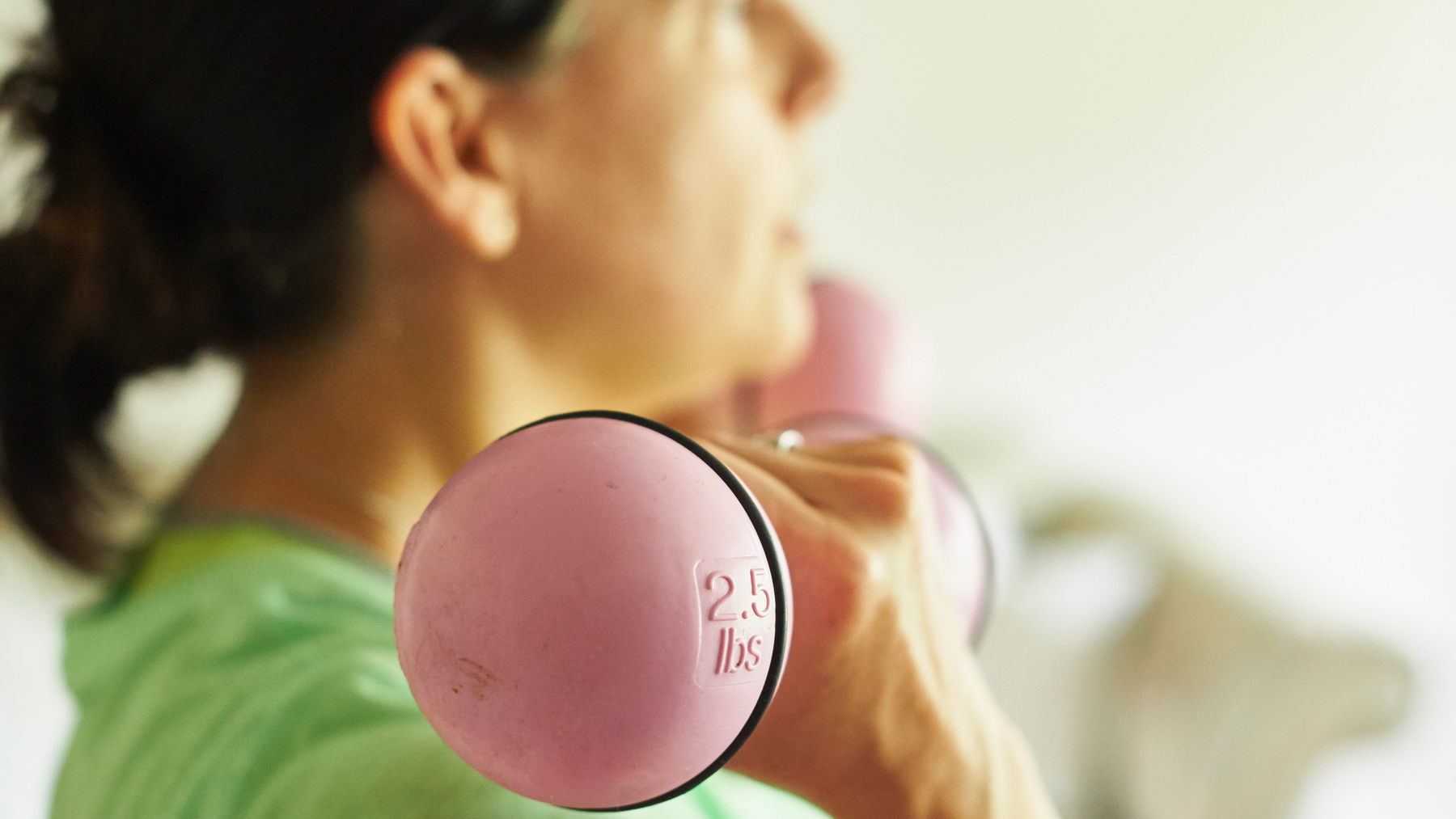Burn calories and boost your metabolism in just 30 minutes with this dumbbell workout
This dumbbell session combines strength training with cardio to burn lots of calories and improve your fitness


Metcon, which is short for metabolic conditioning, is a type of workout that typically blends cardio and weight training into HIIT (high-intensity interval training) circuits. This style of training has many benefits including burning calories fast and building a leaner more toned physique.
Equipment-wise, Metcon workouts are fairly flexible. If you want to just use your own body weight that will work, but items like some of the best adjustable dumbbells, one of the best kettlebells, or the barbell will increase the challenge of your workout and can enhance progress.
This Metcon workout has been developed by personal trainer, Heather Robertson, and is full of compound exercises designed to work your entire body. Your heart rate will rise as you are also working on improving your strength.
Following a short warm up you will head into performing each exercise for 45 seconds taking 15 second breaks in between. This format of training will boost fat burning during the workout and your metabolism will remain elevated hours after the exercise session.
Watch Heather Robertson's 30-Minute Metcon Workout
As you complete a metabolic conditioning session, like the one above, you will use all three of your body's energy pathways (phosphagen, glycolytic and oxidative), which according to the American Council on Exercise, all play a role in generating adenosine triphosphate to charge your muscles. At different stages of the workout, each system will take a turn to do so and as a result, this process assists in improving your energy output.
The good thing about Metcon training that will appeal to those less fond of high-intensity training is that it can still take effect when performed at a moderate intensity. While any HIIT lovers out there may get more out of performing this HIIT workout for fat loss.
Exercise isn't the only thing we have control over when trying to boost our metabolisms. You often hear people say that maintaining a lean physique all starts in the kitchen and this applies to improving the metabolism as well. When we eat, the thermic effect of food occurs as the calories consumed requires our body to digest and process all the nutrients.
Get the Fit&Well Newsletter
Start your week with achievable workout ideas, health tips and wellbeing advice in your inbox.
The food that leads to the greatest increase in the thermic effect is protein. The American Journal of Clinical Nutrition reported in a study that, "dietary protein requires 20–30% of its usable energy to be expended for metabolism and/or storage, whereas carbohydrates require 5–10% and dietary fats require 0–3%."
A high protein diet can also lower drops in metabolism which often occur when fat is lost. When we lose weight we often can lose muscle but protein helps to avoid this. As long as you are including lean sources of protein in your meals and eating high protein snacks when you get hungry then you should feel the benefits.
Jessica is an experienced fitness writer with a passion for running. Her career in journalism began in local news and she holds a Masters in journalism. Jessica has previously written for Runners World, penning news and features on fitness, sportswear and nutrition.
When she isn't writing up news and features for Fit&Well covering topics ranging from muscle building, to yoga, to female health and so on, she will be outdoors somewhere, testing out the latest fitness equipment and accessories to help others find top products for their own fitness journeys. Her testing pairs up nicely with her love for running. She recently branched out to running 10Ks and is trying to improve her time before moving on to larger races. Jessica also enjoys building on her strength in the gym and is a believer in health and wellness beginning in the kitchen. She shares all of this on her running Instagram account @jessrunshere which she uses for accountability and for connecting with like-minded fitness lovers.
-
 I do these two things every day to stay fit and healthy, says the newest star trainer on Chris Hemsworth's fitness app
I do these two things every day to stay fit and healthy, says the newest star trainer on Chris Hemsworth's fitness appHere's how Centr's Korey Rowe trains for longevity
By Sam Rider Published
-
 I thought sports weren't for me, until I realised they're a game-changer for ticking off cardio
I thought sports weren't for me, until I realised they're a game-changer for ticking off cardioI swapped HIIT and running for tennis—and I've never felt better
By Alice Porter Published